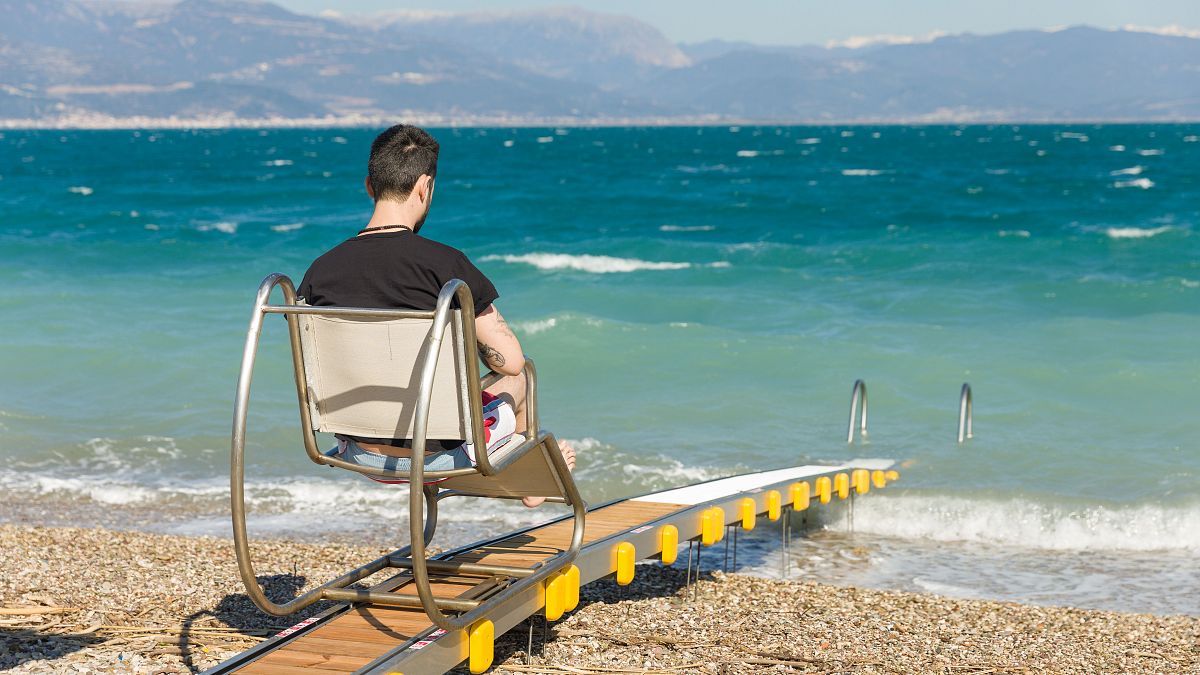Ensuring Beach Accessibility for People with Disabilities in Europe
In Europe, people with disabilities still face challenges when it comes to accessing beaches. However, there are individuals and organizations working tirelessly to make beaches more accessible for all. Brigitte Berckmans and Ramón Espi, founders of the association Handiplage in Bayonne, have been advocating for beach accessibility since 1997. Their association has awarded a five-year label to municipalities that make beaches accessible to people with disabilities. This includes providing access ramps, adapted sanitary facilities, parking spots, and trained bathing guides to assist individuals with disabilities entering and exiting the water. By July, 140 beaches in France have received the Handiplage label, making significant progress in ensuring accessibility for all.
The terrain of some regions, like the coast of Landes in southwestern France, makes it challenging to make beaches accessible. Despite these challenges, Espi emphasizes that there are always solutions available when there is a will. Administrative challenges also exist, with municipalities often having to maintain the amenities once they receive the label. The association has to monitor beaches to ensure that the accessibility features remain in place even as local governments change. Despite these challenges, progress is being made, with beaches on the French Riviera being easier to make accessible due to minimal tides and waves. The determination of individuals like Berckmans and Espi is driving the effort to make beaches inclusive for everyone.
In addition to associations like Handiplage, universities and companies are also contributing innovative solutions to improve beach accessibility. The University of Patras and Greek company Tobea have developed the Seatrac bathing chair, which allows people with disabilities to access and exit the sea independently. The device consists of a walkway that connects the shore with the water, enabling individuals to use their wheelchairs on the beach and then embark on the Seatrac to enter the water. Since 2012, 250 Seatracs have been installed on beaches in various countries, including Greece, Italy, Cyprus, Croatia, Lithuania, and Latvia. Users have provided valuable feedback, leading to improvements such as the installation of showers and a camera for a live view of beach conditions.
The efforts to improve beach accessibility align with international conventions and strategies that promote equal access for people with disabilities. The 2008 UN Convention on the Rights of Persons with Disabilities emphasizes equal access to cultural life, recreation, leisure, and sport. The European Disability Strategy 2010–20 aims to remove barriers to equal participation in public life and leisure activities and to ensure the provision of quality community-based services. This means that the cost of providing accessible amenities, such as the Seatrac chairs, should not be borne by the users, as access to the sea and recreation should be considered basic human rights. The commitment of organizations, municipalities, and businesses to making beaches accessible to all reflects a broader commitment to inclusion and equal opportunities for individuals with disabilities.
As the push for beach accessibility continues, it is crucial to address bureaucratic procedures and legal requirements in different countries. Implementing accessible features requires compliance with various laws and regulations, making collaboration between stakeholders essential. Despite these challenges, the progress made in improving beach accessibility highlights the importance of creating inclusive spaces for all individuals. By working together and leveraging innovative solutions, we can ensure that beaches in Europe are welcoming and accessible to everyone, regardless of their abilities.











